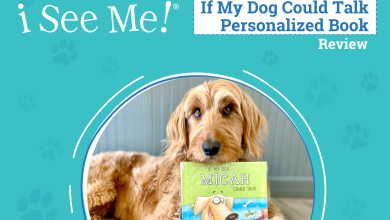My Dog Ate A Scrunchie: Our Vet Discusses Potential Risks, Signs & Next Steps

This unassuming little hair accessory, created by the late Rommy Hunt Revson,1 was an essential item in the 1980s, the subject of ridicule in the early noughties, and is back with a vengeance in the 2020s. Just as it was in the time of The Goonies, Footloose, and Ferris Bueller, you would be hard-pressed today to find a bedroom, bag, or bathroom without at least one of these handy little hair ties. Unfortunately, we’re not always the only ones rummaging around in dark corners or under beds for a scrunchie, and they’re just the right size for a dog to play with and swallow.
If your dog has managed to ingest your favorite hair accessory, try not to panic. In the vast majority of cases, a scrunchie will find its way to the nearest exit, and it will be up to you to decide if you want to salvage it or dispose of it (no judgment here). However, there may be cases where a scrunchie can wreak havoc on the digestive tract, so it’s best to know what to watch out for.


What Happens If My Dog Swallows A Scrunchie?
Unless you have a particularly small dog or exceptionally large scrunchie, there is a good chance that it will gradually make its way through the digestive tract. Sometimes, items like this that are not able to be broken down by stomach acids, may stay in the stomach for a day or two, and will likely take a few more days to make their way through the intestines. But if it’s been more than 4-5 days since your dog swallowed them, it’s time to contact your vet.
💛 🐶 Speak To a Vet Online From the Comfort of Your Couch!


If you need to speak with a vet but can’t get to one, head over to PangoVet. It’s an online service where you can talk to a vet online and get the personalized advice you need for your pet — all at an affordable price!
If your dog isn’t so lucky, it is possible that a swallowed scrunchie could cause a blockage in the esophagus, stomach, or intestines. Dogs that are very small, have health issues, or a history of intestinal problems or surgery, have a higher risk of complications, and you should contact your vet immediately.
Signs of an esophageal obstruction
- Regurgitation (food/water expelled without abdominal effort)
- Difficulty swallowing
- Exaggerated swallowing
- Drooling
- Gagging/coughing
Signs of a gastric (stomach) or intestinal obstruction
- Inappetence
- Abdominal discomfort or pain
- Rigid abdomen
- Vomiting
- Drooling
- Passing no or very small amounts of feces
- Panting
- Dehydration – tacky gums, prolonged skin tent
If the scrunchie gets stuck in the colon, you may see signs of constipation, like squatting repeatedly and straining to defecate. It will likely pass eventually, but they may need an enema or some lubrication to help.


Will My Dog Need Surgery?
If your dog develops an obstruction, surgery is a likely outcome. First, your vet will perform x-rays or an ultrasound to get an idea of where the obstruction is, and how best to treat it. Sometimes, administering intravenous fluids and lubricating medications may be enough to get the problematic piece of fabric to pass, but if there is no hope of the scrunchie making its way to the ‘exit’, surgery will be needed to retrieve them.
Left untreated, an obstruction can lead to intestinal rupture and potentially deadly peritonitis.
Should I Make My Dog Vomit?
If you have just witnessed your dog swallow a scrunchie (or any other non-food item) the first thing you should do is get in touch with your vet, as your next steps may depend on the age, health, and size of your dog, as well as the size of the scrunchie.
Never attempt to make your dog vomit at home unless specifically instructed to by your vet. Your dog may regurgitate or vomit the scrunchie up on their own, so be sure to supervise them closely. You don’t want to be waiting for something to pass that has already been ejected!


What Else Should I Watch Out For?
The most important thing to monitor is that your dog is eating, drinking, and going to the toilet normally and that they seem bright and well. If your dog seems off-color or uncomfortable at all, contact the vet straight away.
If your dog is comfortable and happy, it is vital to make sure they stay hydrated. The longer it takes for the scrunchie to travel through the intestines, the drier it will become, making it more difficult to pass. Making sure your dog is drinking plenty of water can really help things along.
Should I Feed My Dog?
Do not give them anything to eat until you have spoken to your vet.
If your dog is showing no signs of discomfort or an obstruction, feeding them little and often can help keep their digestive tract moving and speed up the passage of the swallowed item. It also allows us to see if your dog is still wanting to eat, or if they are having difficulty digesting food.


Conclusion
If your dog has swallowed a scrunchie, don’t panic. Most of the time, a scrunchie will be small and soft enough to pass through the digestive tract, but you should get in touch with your vet for specific advice and instructions. They may recommend that you bring your dog in to make them vomit, to give them fluids and medication, or to monitor them closely.
If your dog has any health issues, is particularly small in size, or has had previous intestinal surgery, it is imperative that you speak with your vet, as this will have a significant impact on how they will need to proceed.
Featured Image Credit: Julija Sh, Shutterstock



